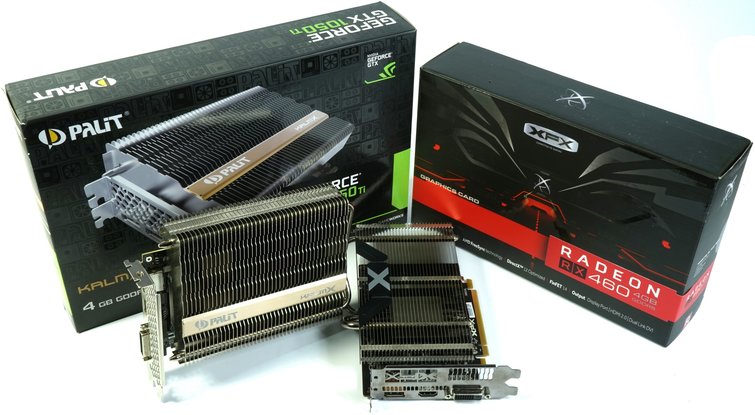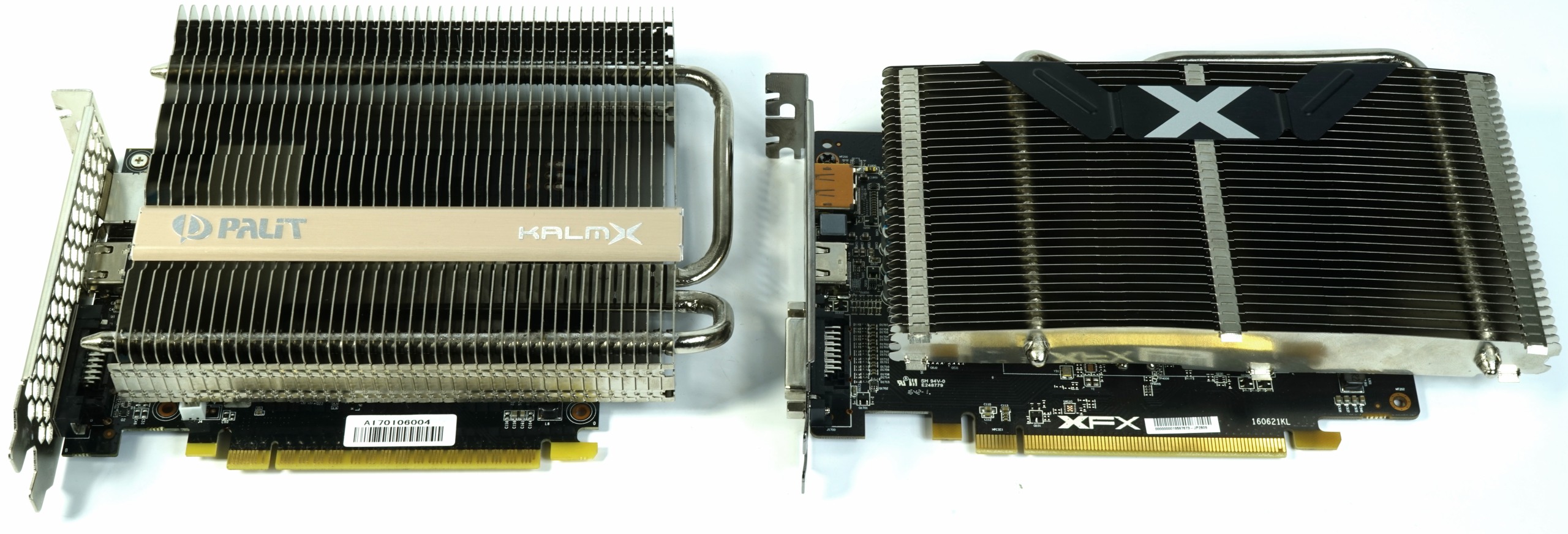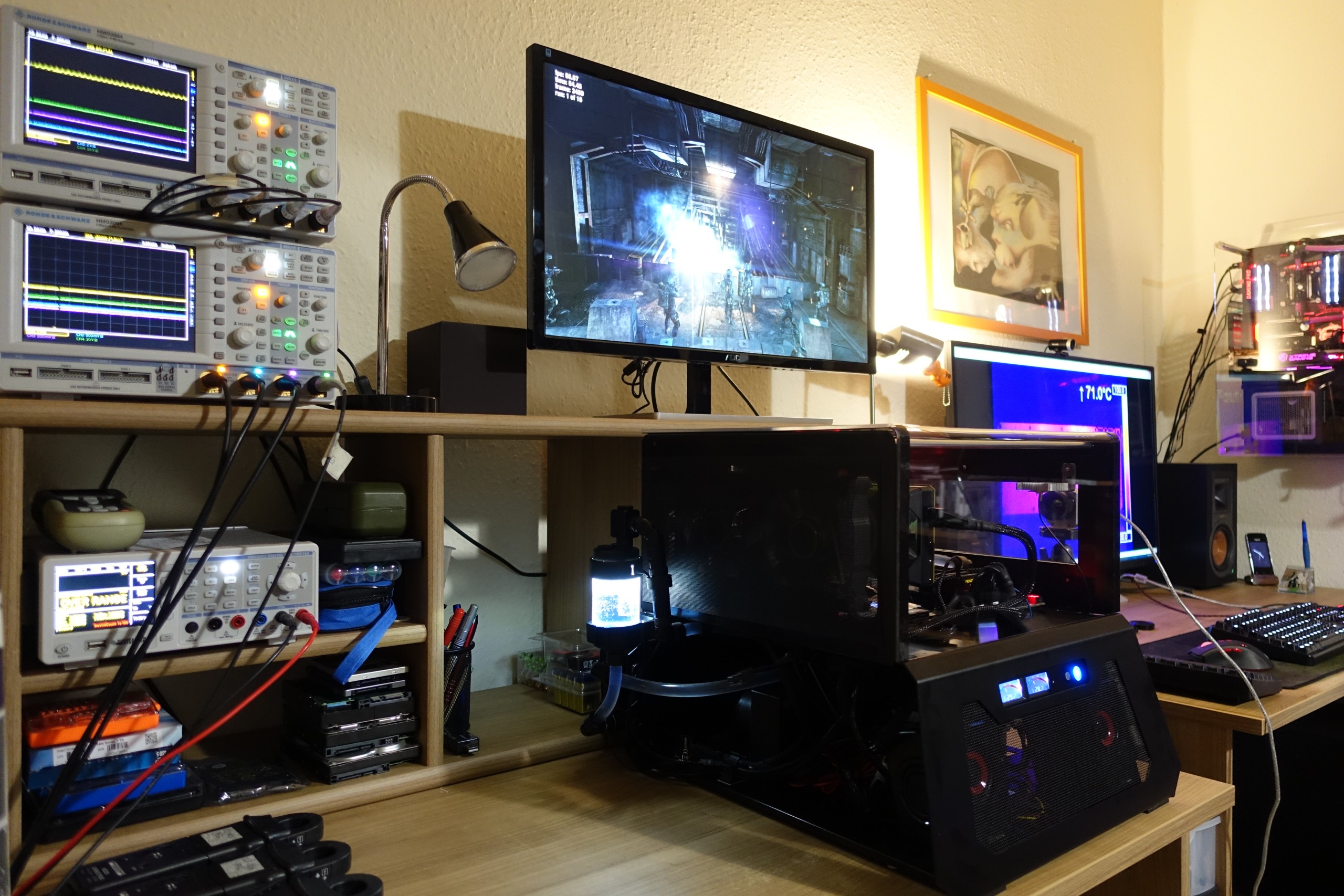We remember the little experiment Pascal becomes passive: We are building a fanless GeForce GTX 1050 Ti (Eglisch: Modifying a GeForce GTX 1050 Ti for Passive Cooling), in which I – as i have done a few times before – narrowly failed a completely passive cooling. In the end, it was never without a generated draught. With the XFX RX460 4GB Passive Heatsink Edition and the Palit GTX 1050 Ti KalmX 4GB, two factory solutions are now available on the market that want to make this better.

But can something like this really happen? A specially designed heat sink can of course score with optimized slat spacing, but I am professionally skeptical and will test everything: the completely fanless operation in fresh air (Open Benchtable) and in the closed housing as well as with a housing fans (front, overpressure) or two fans (front and back, vacuum).
We also see that XFX and Palit take completely different paths in the radiator design in terms of the utilization of the airflow through the targeted use of the selected slat orientation. On the surface, Palit's map could only work with pure self-convection, while the XFX card might require some airflow.

But at the end of the day you're always smarter – me too. In terms of performance on paper, the Palit GTX 1050 Ti KalmX is clearly superior, of course, but that's not really the point. Before we start thinking about gaming, the parts have to work the way marketing would have us believe.
But before we start now and disassemble both cards as usual, the technical data comes here quickly as a mental way:
Commissioning and technical data
Test system and methotik we have already described in great detail in the basic article So we test graphics cards, as of February 2017 (English: How We Test Graphics Cards) and therefore only refer to this detailed description for simplicity. So if you want to read everything again, you are welcome to do so.

If you are interested, the summary in table form quickly provides a brief overview:
| Test systems and measuring rooms | |
|---|---|
| Hardware: |
Intel Core i7-5930K -4.2GHz MSI X99S Xpower Gaming Titanium Corsair Vengeance DDR4-3200 en 2400 MHz 1x 1 TByte Toshiba OCZ RD400 (M.2, System SSD) 2x 960 GByte Toshiba OCZ TR150 (Storage, Images) Be Quiet Dark Power Pro 11, 850-watt power supply Windows 10 Pro (all updates) |
| Cooling: |
Alphacool Ice Pump VPP755 Alphacool Nexxxos UT60 Full Copper, 360 mm Alphacool Cape Corp Coolplex Pro 10 LT 5x Be Quiet Silent Wings 3 PWM Thermal Grizzly Kryonaut (for cooler change) |
| Housing: |
Lian Li PC-T70 with expansion kit and modifications Modes: Open Benchtable, Closed Case |
| Power consumption: |
non-contact DC measurement on the PCIe slot (Riser-Card) non-contact DC measurement on the external PCIe power supply Direct voltage measurement on the respective feeders and on the power supply 2x Rohde & Schwarz HMO 3054, 500 MHz multi-channel oscillograph with memory function 4x Rohde & Schwarz HZO50, current togor adapter (1 mA to 30 A, 100 KHz, DC) 4x Rohde & Schwarz HZ355, touch divider (10:1, 500 MHz) 1x Rohde & Schwarz HMC 8012, digital multimeter with storage function |
| Thermography: |
Optris PI640, infrared camera PI Connect evaluation software with profiles |
| Acoustics: |
NTI Audio M2211 (with calibration file) Steinberg UR12 (with phantom power for the microphones) Creative X7, Smaart v.7 own low-reflection measuring room, 3.5 x 1.8 x 2.2 m (LxTxH) Axial measurements, perpendicular to the center of the sound source(s), measuring distance 50 cm Noise in dBA (Slow) as RTA measurement Frequency spectrum as a graph |

































Kommentieren